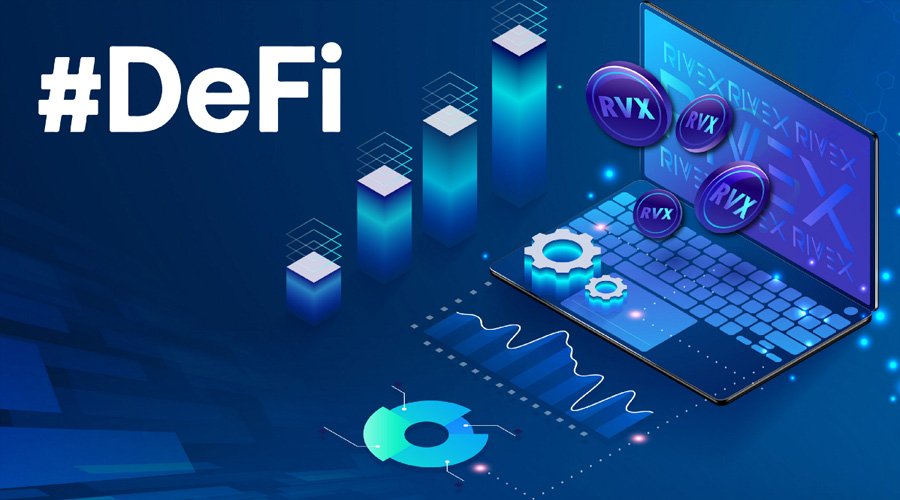The rise of Decentralized Finance (DeFi) has brought about significant changes in the way financial transactions are conducted. DeFi allows for financial activities to be conducted on a decentralized platform without the need for intermediaries. However, one of the major challenges that DeFi is facing is interoperability, which refers to the ability of different systems to work together seamlessly. Cross-chain interoperability in DeFi is a solution that aims to address this challenge.
What is Cross-chain Interoperability?
Cross-chain interoperability refers to the ability of different blockchain networks to communicate and exchange data with each other. In simple terms, it means that different blockchains can work together seamlessly. This is essential in DeFi, where users can move assets across different platforms to access a wider range of services.
Why is Cross-chain Interoperability Important for DeFi?
Cross-chain interoperability is essential for DeFi for several reasons. Firstly, it allows for the exchange of assets across different blockchain networks. This means that users can access a wider range of financial services that are not available on their native blockchain. Secondly, cross-chain interoperability enhances liquidity by allowing assets to move freely across different blockchain networks. This is critical for the success of DeFi, as liquidity is a key factor in determining the value of assets.
Thirdly, cross-chain interoperability enables developers to build decentralized applications (dApps) that interact with multiple blockchain networks. This means that developers can create more robust and sophisticated dApps that can offer users a wider range of services.
Challenges of Cross-chain Interoperability in DeFi
Cross-chain interoperability is not without its challenges. One of the major challenges is the lack of a standard protocol for communication between different blockchain networks. This means that developers must create custom solutions to enable cross-chain interoperability, which can be time-consuming and expensive.
Another challenge is the difference in the technical infrastructure of different blockchain networks. Each blockchain network has unique technical specifications, making it difficult to achieve seamless interoperability between them. Moreover, the security of assets moving across different blockchain networks is also a concern, as it requires coordination between different networks to ensure that assets are not lost or stolen.
Solutions for Cross-chain Interoperability in DeFi
Several solutions have been proposed to address the challenges of cross-chain interoperability in DeFi. These solutions can be broadly classified into interoperability protocols and cross-chain bridges.
Interoperability Protocols
Interoperability protocols are software solutions that enable communication between different blockchain networks. These protocols define a standard set of rules that allow different blockchains to exchange data and assets seamlessly. Some of the popular interoperability protocols include Polkadot, Cosmos, and Chainlink.
Polkadot is a next-generation blockchain network that aims to solve the problem of interoperability. It allows for the seamless transfer of assets and data across different blockchains, making it easier for developers to build decentralized applications interacting with multiple blockchain networks.
Cosmos is another interoperability protocol that enables cross-chain communication between different blockchain networks. It uses a consensus algorithm called Tendermint, which allows for fast and secure cross-chain transactions.
Chainlink is a decentralized oracle network that provides reliable and secure data feeds to decentralized applications. It enables cross-chain communication by providing a bridge between different blockchain networks.
Cross-Chain Bridges
Cross-chain bridges are another solution that enables cross-chain communication between different blockchain networks. These bridges are essentially software that connects two or more blockchains and allows for the seamless transfer of assets between them.
One example of a cross-chain bridge is the Wrapped Bitcoin (WBTC) protocol, which allows users to transfer Bitcoin to the Ethereum network. WBTC is an ERC-20 token representing Bitcoin on the Ethereum network, allowing users to access DeFi applications on Ethereum using Bitcoin.
Another example of a cross-chain bridge is the Binance Smart Chain (BSC), which is a separate blockchain network that is interoperable with the Ethereum network. BSC allows for the seamless transfer of assets and data between the two networks, which enables users to access a wider range of DeFi applications.
Benefits of Cross-chain Interoperability in DeFi
Cross-chain interoperability offers several benefits for the DeFi ecosystem. Firstly, it enhances liquidity by allowing assets to move freely across different blockchain networks. This means that users can access a wider range of financial services, increasing their assets’ value.
Secondly, cross-chain interoperability enables developers to build more sophisticated and robust dApps that can interact with multiple blockchain networks. This means that users can access more advanced financial services that are not available on their native blockchain.
Thirdly, cross-chain interoperability enhances the overall security of the DeFi ecosystem. By enabling assets to move freely across different blockchain networks, users can diversify their risks and reduce their exposure to any single point of failure.
Future of Cross-chain Interoperability in DeFi
The future of cross-chain interoperability in DeFi is promising. As the DeFi ecosystem continues to grow, the need for cross-chain interoperability will become more apparent. Developers are already working on interoperability solutions that will enable seamless communication between different blockchain networks.
Moreover, developing layer 2 solutions such as the Lightning Network and Raiden Network will also enhance cross-chain interoperability. These layer 2 solutions enable off-chain transactions that can settle on multiple blockchain networks, which makes it easier to achieve cross-chain interoperability.
Conclusion
Cross-chain interoperability is a critical solution that enables different blockchain networks to communicate and exchange data seamlessly. In the context of DeFi, cross-chain interoperability enhances liquidity, enables developers to build more sophisticated apps, and enhances the overall security of the ecosystem. While cross-chain interoperability is not without its challenges, the development of interoperability protocols and cross-chain bridges makes it easier to communicate seamlessly between different blockchain networks. As the DeFi ecosystem continues to grow, cross-chain interoperability will become even more critical for the success of the ecosystem.
I’m a professional writer specializing in the field of cryptocurrencies. My work has been published in numerous online and offline publications which has made me one of the leading authorities in this industry. In addition to my work as an author, I’m also a highly sought-after speaker on the topic of cryptocurrency investing. I have given talks at some of the world’s most prestigious financial institutions, and my advice is regularly featured in the media.



